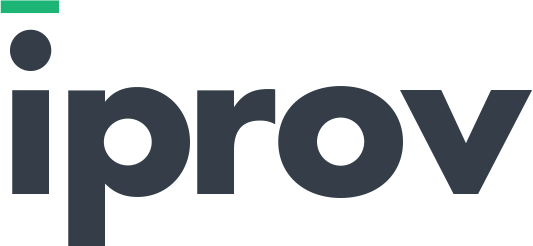
Social media isn’t just for updates—it’s a powerful tool for growing your business. However, without a social media strategy, you risk wasting time and missing valuable opportunities. By developing a clear strategy, you can attract the right audience, build trust, and drive sales. Unfortunately, many businesses struggle with consistency and engagement, but a structured approach helps you stay on track and maximize your impact. When you use social media intentionally, you turn followers into loyal customers and conversations into conversions, ultimately driving long-term success.
Key Takeaways:
- A social media strategy helps businesses plan content, engage audiences, and track success. Without one, efforts lack direction.
- Brand awareness & trust improve with strategy: 91% of customers follow brands online, and 76% trust active brands.
- Social listening & analytics refine strategy by tracking engagement, sentiment, and competitor tactics.
- SMART goals guide marketing; key metrics include follower growth, CTR, and conversions.
- Organic vs. paid social: Organic builds trust but takes longer to grow; paid ads increase reach but require budgeting.
- Influencer marketing boosts credibility: micro-influencers often have higher engagement rates.
- Content calendars keep posting consistent and strategic for maximum engagement.
- SEO & social media work together to increase visibility and traffic.
- Trends for 2025: AI-driven content, short-form videos, and social commerce dominate.
Understanding the Importance of a Social Media Strategy
A social media strategy is your game plan for using social platforms to achieve business goals. With a clear approach, you can post the right content, engage the right audience, and track progress effectively. Otherwise, your efforts may lack direction and fail to deliver meaningful results. Without a strategy, you're just guessing and missing valuable opportunities.
Many businesses struggle to manage social media effectively. However, a well-thought-out social media strategy solves this by guiding content creation, audience interaction, and performance tracking. More importantly, it ensures that all content aligns with your business objectives, creating a cohesive and impactful online presence.
One major benefit of a strong strategy is increased brand awareness. Customers expect businesses to be active online, and with 91% of consumers using social media to stay informed about brands, engaging content keeps your business top of mind.
Trust also plays a key role. Studies show that 76% of consumers believe a strong social media presence builds confidence. By consistently sharing thoughtful, well-planned content, you make your brand more relatable and credible.
Tracking success becomes much easier when you have a structured approach. With a strong social media strategy, you can measure engagement, reach, and conversions while using social listening tools to assess customer sentiment and analyze competitor strategies.
The digital space is constantly evolving. Platforms update their algorithms, and user habits shift. Without a strategy, you end up reacting to changes rather than proactively adapting. With 81% of consumers using social media for product discovery, it’s a critical channel for converting followers into customers.
Managing social media without a plan can feel overwhelming. However, a solid social media strategy makes your efforts more efficient, saves time, improves engagement, and delivers measurable results.
Setting Goals and Measuring Success
Setting clear goals is essential to social media success. Otherwise, your social media strategy lacks direction, making it difficult to measure progress or refine your approach. To stay on track, start by defining what you want to achieve. Common objectives include increasing brand awareness, driving website traffic, generating leads, and boosting engagement. By following the SMART Goals Framework—Specific, Measurable, Achievable, Relevant, and Time-bound—you ensure that your goals are clear and actionable.
Once you have established goals, the next step is tracking Key Performance Indicators (KPIs) to measure success. These KPIs should align with your objectives. If brand awareness is your focus, monitor follower growth, impressions, and reach. In addition, if lead generation is a priority, measure conversions, sign-ups, and click-through rates. By consistently evaluating these metrics, you can fine-tune your social media strategy for better results.
Another crucial aspect of measuring success is calculating the Return on Investment (ROI) for your social media efforts. To determine ROI for online campaigns, use this formula:
ROI (%) = [(Revenue from social media – Cost of social media) ÷ Cost of social media] × 100
For example, if you invest $1,000 in a campaign and generate $5,000 in sales, your ROI is 400%. To improve your ROI, analyze performance data, optimize underperforming content, and refine your social media strategy based on insights. Investing in high-performing content and precisely targeting ads can significantly enhance results.
Tracking progress should always be an ongoing process. Regular reporting helps you identify trends, understand audience behavior, and make necessary adjustments. Additionally, utilizing social media analytics tools streamlines performance tracking, making it easier to refine your strategy and maximize impact. By continuously optimizing your social media strategy, you set your business up for sustained success in an ever-evolving digital landscape.
Key Components of an Effective Social Media Strategy
A strong social media strategy keeps your efforts focused and results-driven. Without a clear plan, it’s easy to post content that doesn’t resonate with your audience or drive meaningful engagement. As a result, your efforts may feel scattered and ineffective. To make the most of your social media presence, you need a structured approach that ensures consistency, maximizes engagement, and aligns with your business goals.
Conduct Audience Research and Identify Trends
Understanding your audience is the foundation of any effective social media strategy. Therefore, you need to know who they are, where they spend time online, and what type of content captures their attention. Additionally, tools like platform insights and Google Analytics provide valuable data to guide your approach.
Since trends change rapidly, staying updated is essential. Successful brands monitor emerging content formats, hashtags, and platform updates. For example, "edutainment"—a mix of educational and entertaining content—has become increasingly popular. Businesses that leverage this approach often see higher engagement and stronger connections with their audience.
Choose the Right Platforms for Your Business
Not every platform is suitable for every business, so focusing on the right ones maximizes impact. Instead of spreading yourself too thin, concentrate on two or three platforms where your audience is most active:
- Instagram: Best for visually-driven brands and e-commerce.
- LinkedIn: Ideal for B2B networking and industry insights.
- X (formerly Twitter): Great for real-time updates and brand engagement.
- Facebook: Strong for community-building and targeted advertising.
- TikTok: Effective for short, engaging videos with viral potential.
By prioritizing the right platforms, you ensure your social media strategy aligns with your business goals and audience preferences.
Analyze Competitors to Refine Your Strategy
Studying competitors provides valuable insights into what works in your industry. Conduct a benchmark analysis to evaluate their posting frequency, content style, and engagement rates. Ask yourself:
- Where are they most active?
- Which types of content generate the most engagement?
- How do they interact with their audience?
Using this data, you can refine your social media strategy and identify opportunities to stand out. If competitors are seeing success with video content, for example, it may be time to invest in video marketing as well.
A well-researched social media strategy gives your business a clear direction. By thoroughly understanding your audience, carefully selecting the right platforms, and consistently staying aware of industry trends, you can create content that truly resonates and drives real results. Furthermore, staying adaptable is essential—successful strategies must evolve as digital landscapes continuously shift.
Creating a Content Calendar that Drives Engagement
A social media strategy isn’t complete without a well-planned content calendar. Without one, posting can become inconsistent, rushed, or ineffective. A structured approach ensures that every post serves a purpose and aligns with your overall business goals.
Organizing Content Pillars for Brand Cohesion
A well-structured content strategy keeps your audience engaged while reinforcing your brand’s identity. Additionally, keep messaging clear and engaging. Your social media strategy should include content pillars—key themes that guide what you post. Rotating these themes ensures variety and prevents content from feeling repetitive or overly promotional.
Examples of content pillars include:
- Educational content: Tips, how-to guides, and industry insights that provide value to your audience.
- Interactive content: Polls, questions, and challenges that encourage engagement.
- Promotional content: Announcements, product highlights, and special offers to drive sales.
- User-generated content: Testimonials, customer stories, and reviews that build trust.
By balancing these pillars, you create a content mix that informs, entertains, and converts your audience.
Scheduling Posts for Maximum Reach and Engagement
Timing plays a key role in the success of your social media strategy. Posting when your audience is most active increases engagement and visibility. While every audience is different, general guidelines suggest:
- Instagram: Best times are morning (7–9 a.m.) and evening (6–9 p.m.).
- X (formerly Twitter): Lunchtime (12–3 p.m.) and early evening (5–7 p.m.).
- LinkedIn: Weekday mornings (7–9 a.m.) and lunch hours (12–1 p.m.).
- Facebook: Late morning (8–11 a.m.) and early afternoon (1–3 p.m.).
Using platform analytics helps fine-tune your posting schedule based on real audience behavior, ensuring you reach the right people at the right time.

The Benefits of a Content Calendar
A well-structured content calendar simplifies planning and improves the efficiency of your social media strategy by:
- Keep posting consistently and intentionally.
- Aligning content with important dates, trends, and business goals.
- Ensuring a balanced mix of educational, promotional, and interactive content.
- Reducing last-minute stress and rushed decision-making.
Scheduling tools like Hootsuite and Buffer streamline the process, allowing you to focus more on engagement and audience interaction rather than daily content planning. By implementing a content calendar, your social media strategy becomes more strategic, organized, and effective.
A strong social media strategy is essential for building brand awareness, driving engagement, and achieving business goals. Without a clear plan, efforts can feel scattered and ineffective. Additionally, by understanding your audience, choosing the right platforms, and maintaining consistency with a content calendar, you can maximize your impact. Social media is constantly evolving, so staying adaptable and tracking performance ensures long-term success. Investing in a well-structured strategy not only strengthens your online presence but also turns followers into loyal customers.
Take Your Social Media Strategy to the Next Level
Don't let your business miss out on the power of a strong social media presence. A well-planned strategy helps you connect with your audience, build trust, and drive real results. Let iProv help you craft a winning social media strategy that delivers measurable success. Contact us today to get started!
